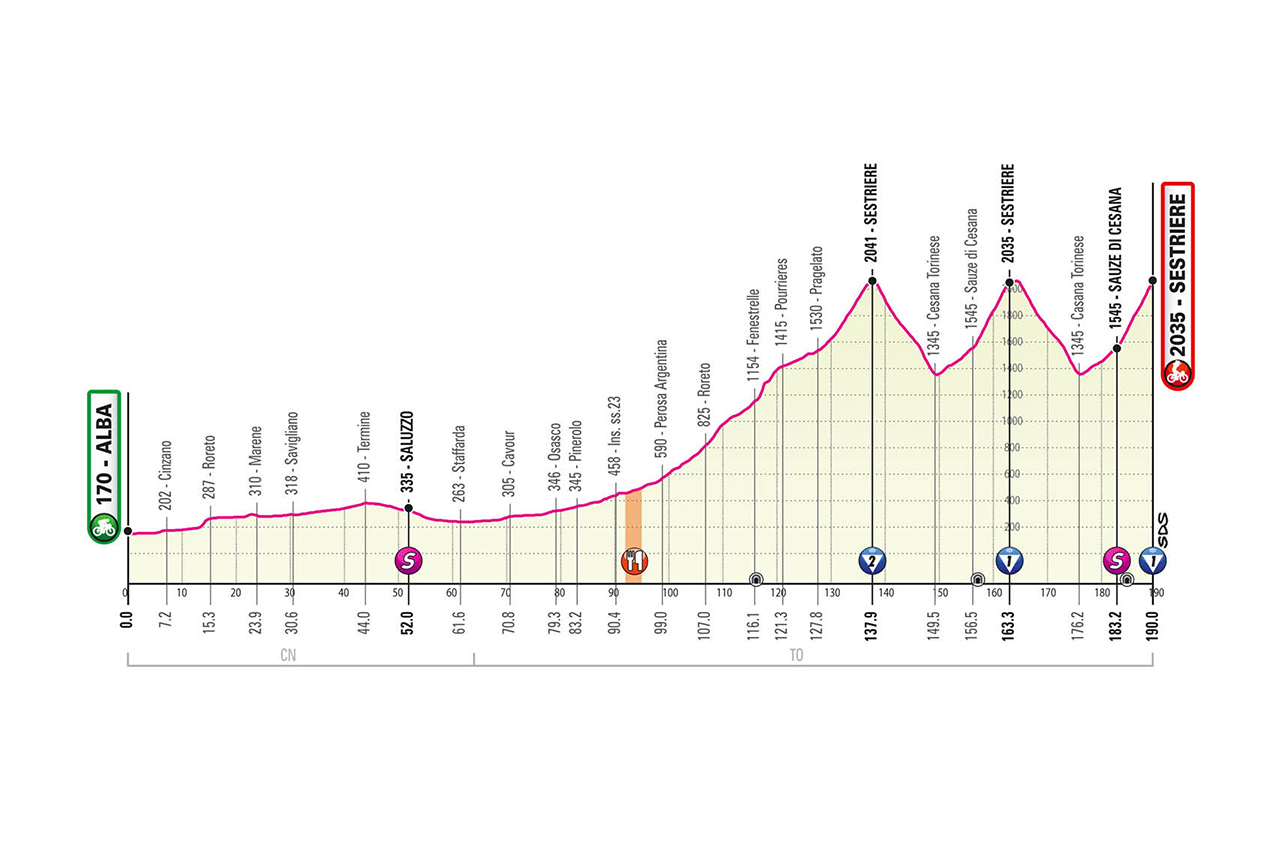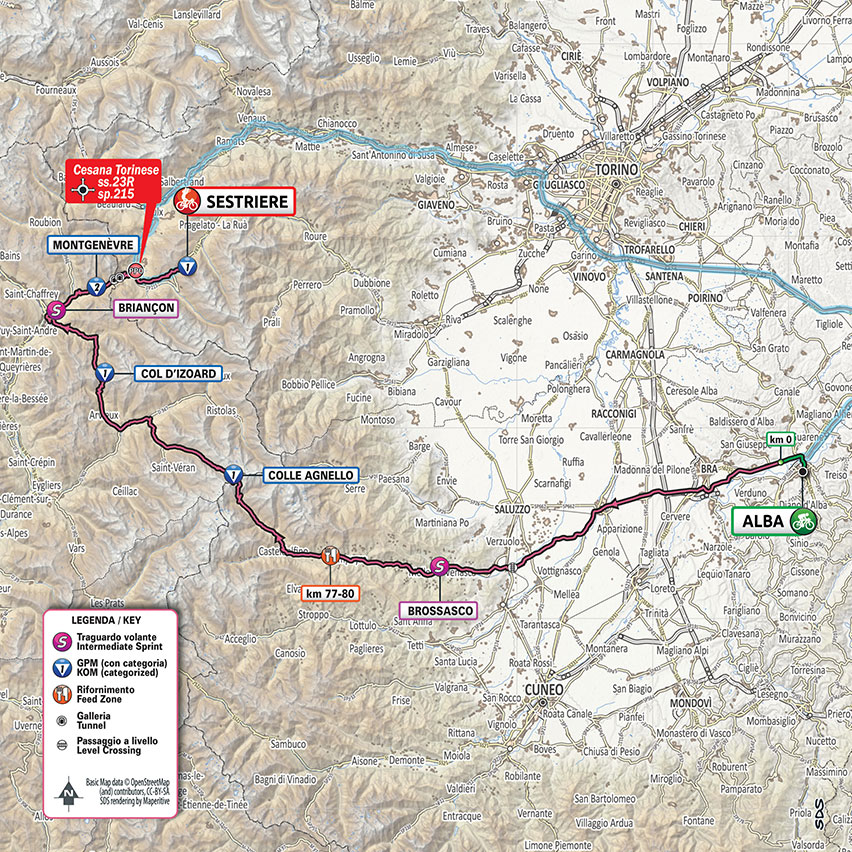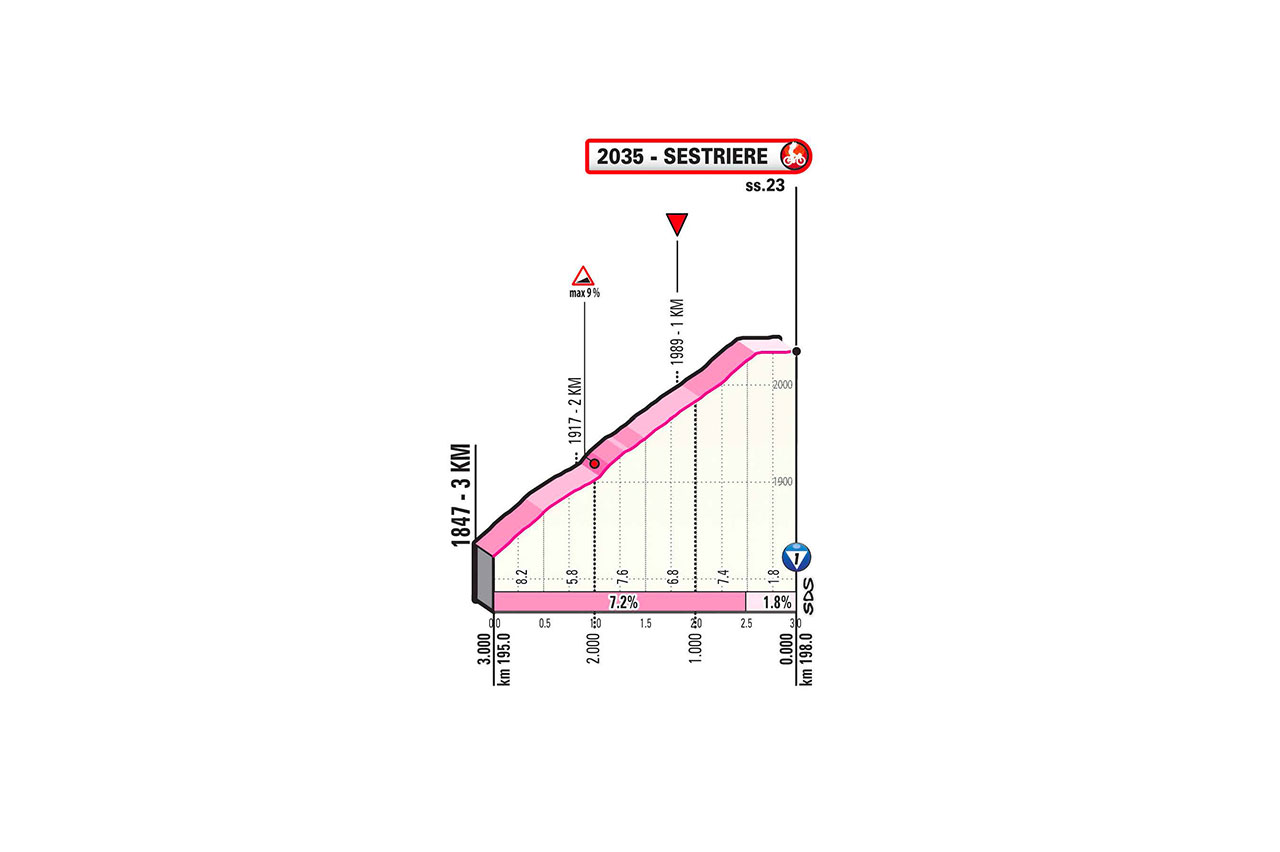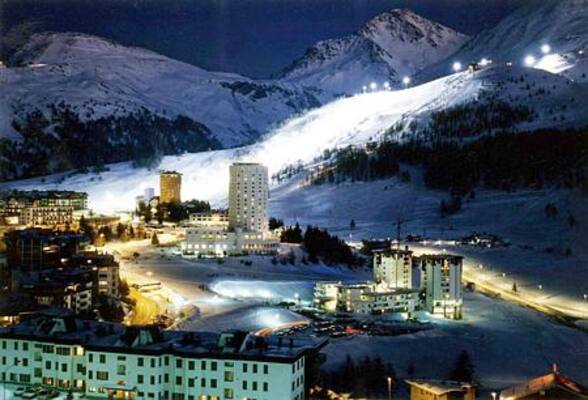
So I figured this wasn't up yet cause there was no @Eshnar post to plagiarize to#gethype for this stage.
So first, lets start with 2 minutes of silence for what could have been. What should have been. Colle d'Agnello will forever remain in The Bag.
Stage 20: Alba – Sestriere 198 km
Saturday, October 24th, 10:25 CEST


Technical Overview:
When cycling fans all over the world fantasize about mountain stages in the Alps, sooner or later they come up with this stage. I have seen it in almost every cycling forum out there, so much in fact that it’s hard to believe this route has never actually been raced before. But it’s finally time. From the town of Alba to the mythical Sestriere, here are the last four climbs of the 2020 Giro d’Italia.
The stage starts rather gentle, at the foot of the Langhe hills, and heads west on flat and straight roads for about 50 km, before entering the long Varaita valley. Here the road starts to rise up gradually, and the riders will find the first intermediate sprint of the day, in Brossasco. At km 74, the peloton will reach the town of Sampeyre, famous to cycling fans for two very good reasons: one is the eponymous climb that heads south, whereas the other is the climb the riders are actually going to face today, the mythical Colle dell’Agnello (GPM1, 21.3 km at 6.8%). This never-ending climb is basically two very different climbs in one: first a long drag of 22.5 km through the valley, with some sporadic serious ramps, like the one after Casteldelfino, where the official climb begins; then, after the town of Chianale, the second part starts, with its 9 km at 10%, from 1840m to 2744m above sea level, with only one short respite of 500m at 4 km to the top. Always relatively far from the stage finish, this climb has seen significant action every single time it featured in the Giro (which are not many, admittedly… only four). This being 2020 however, let’s not expect too much.
The top of the Agnello also marks the border between Italy and France, and the peloton will leave Italy for the only time of this year’s route, and for a very good reason. In fact, after a long and rather tricky descent (especially the upper part), the riders will only find about 3 km of flat before the road goes up again. If there ever was a non-Italian climb to have a special place in the history of the Giro, it would be this one: the Col d’Izoard (GPM1, 14.2 km at 7.1%), rigorously from the southern side (the one of the iconic Casse Deserte), has seen some of the most memorable moments of this race. Who knows, it might see the most memorable moment of this edition too, as this climb is by far the best place to attack today. The top is at 54 km to go. Many, but not too many.
The descent of Izoard is very technical at first and then eases off down the valley, not unlike the descent of Agnello. At the bottom the peloton will traverse the town of Briançon, climbing a short uphill wall to reach the old town where the second and last intermediate sprint is situated. After that, the route will head back to Italy through the third and easiest climb of the day, the Montgenèvre (GPM2, 8.4 km at 6%). This climb starts very gently, with 3 km at around 4% and then a false flat of other 3 km. Its last 7 km however have a very respectable average of 6.4%. At the top there are only 21 km to go. The descent is fairly easy and almost immediately crosses the border back to Italy.
At 11.5 km to go the peloton will reach Cesana Torinese, where the descent ends and the final climb of the day starts, and this is another mythical one. Sestriere (GPM1, 11.4 km at 5.9%) is one of the most classic stage finishes for both Giro and Tour. From this side it is an 11 km climb at around 6%, so nothing special but not a false flat either. If the GC guys haven’t attacked already, this should be more than enough to offer a last chance to gain a few seconds. The climb is hardest at the very beginning and at the very end, so any serious attack left should come as early as possible. Once they reach the town of Sestriere, the climbing of this edition is all but over. The GC battle however might not be done and dusted yet.

The Climbs:
Colle dell’Agnello: GPM1, 21.3 km at 6.8%
A crazy hard climb, first a long drag in the valley and then a Passo Giau worth of climbing at higher altitude than the original. Those 10.5 km at 9.3% always do a lot of damage. Last time they raced here this climb (and its descent) was decisive…

Col d’Izoard: GPM1, 14.2 km at 7.1%
As I mentioned, the most iconic non-Italian climb of the Giro history. Mostly because its presence in the Cuneo – Pinerolo 1949, but not only that. It’s missing in the Giro since 2007, when the stage finished in Briançon. Its second half is very consistently at around 9%, with only a very short descending section at 2 km to go. This year, its lunar landscape might see the key moment of the whole edition.

Montgenèvre: GPM2, 8.4 km at 6%
A climb that will bring everyone back to Italy in a very different way than how they entered France: on easy slopes and wide roads.

Sestriere: GPM1, 11.4 km at 5.9%
Giro or Tour, the race often has been decided here. It’s hard to find a climb more famous than this one in cycling, especially compared to its actual numbers, which are mediocre at best. It has been theater to some of the greatest feats of this sport: Cuneo – Pinerolo 1949, S.Gervais – Sestriere 1992… even one of the craziest ITTs ever, the Pinerolo – Sestriere 1993. The last time the Giro climbed this side it was 2009, when Sestriere was actually Cima Coppi of an unusually low altitude edition.

What to expect:
As always on the last mountain stage of a Giro, it depends a lot on the GC situation. The Agnello should force a selection by merely existing, and if a pretender has the legs on Izoard he will have to try. If nothing happens there, then all will be decided on Sestriere. Or even tomorrow…

Sestriere
Now onto the actual stage. It is a stage. In the Giro. In 2020. The 20th.

Things to happen. Riders to win. Riders to lose. You heard it here first
Last edited:













